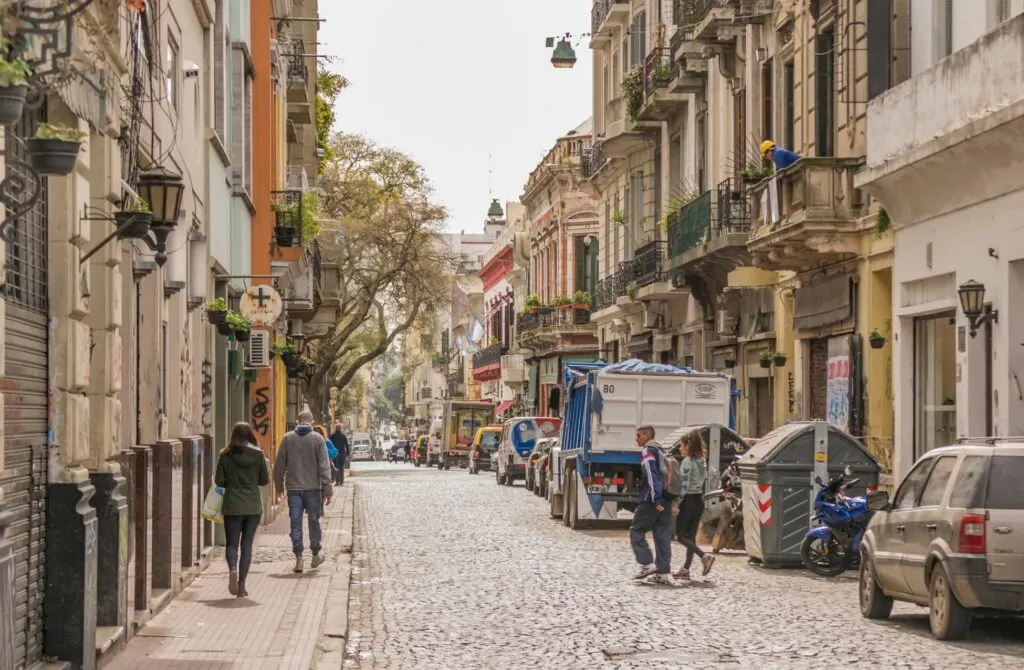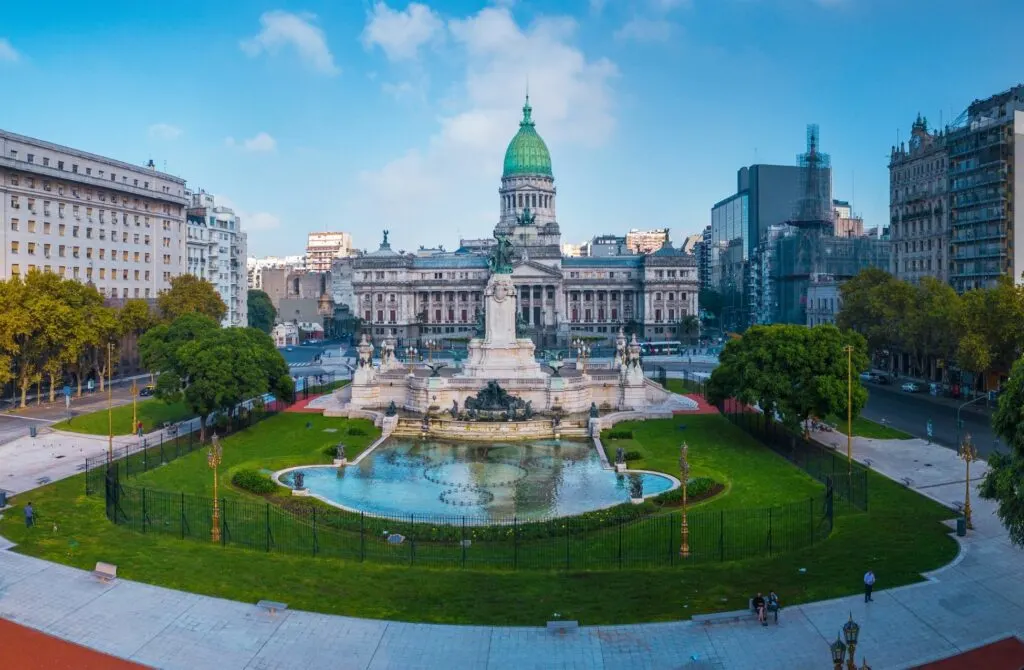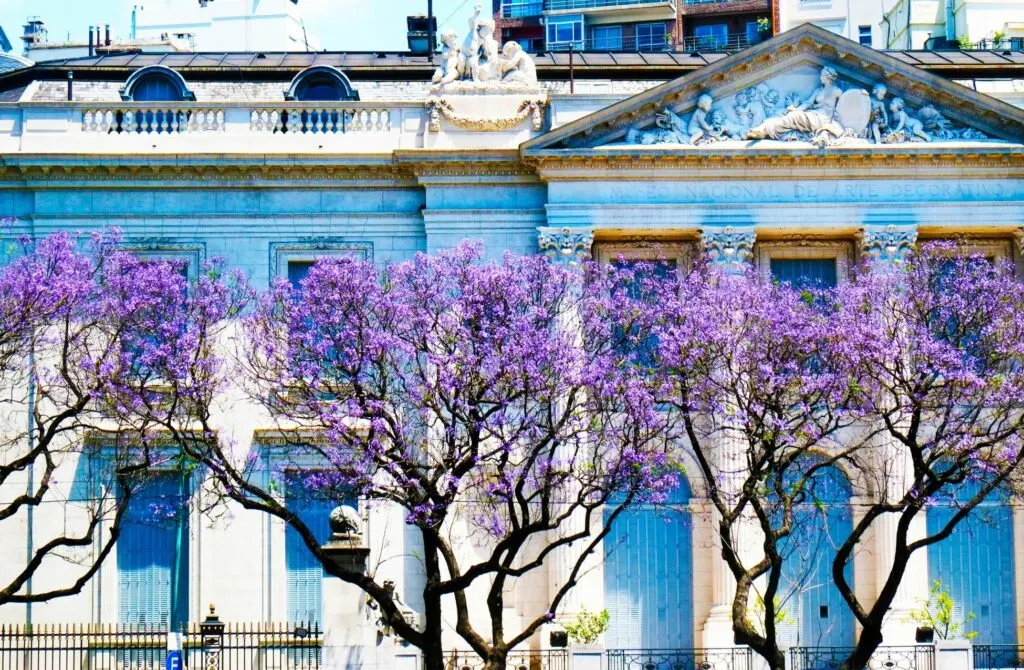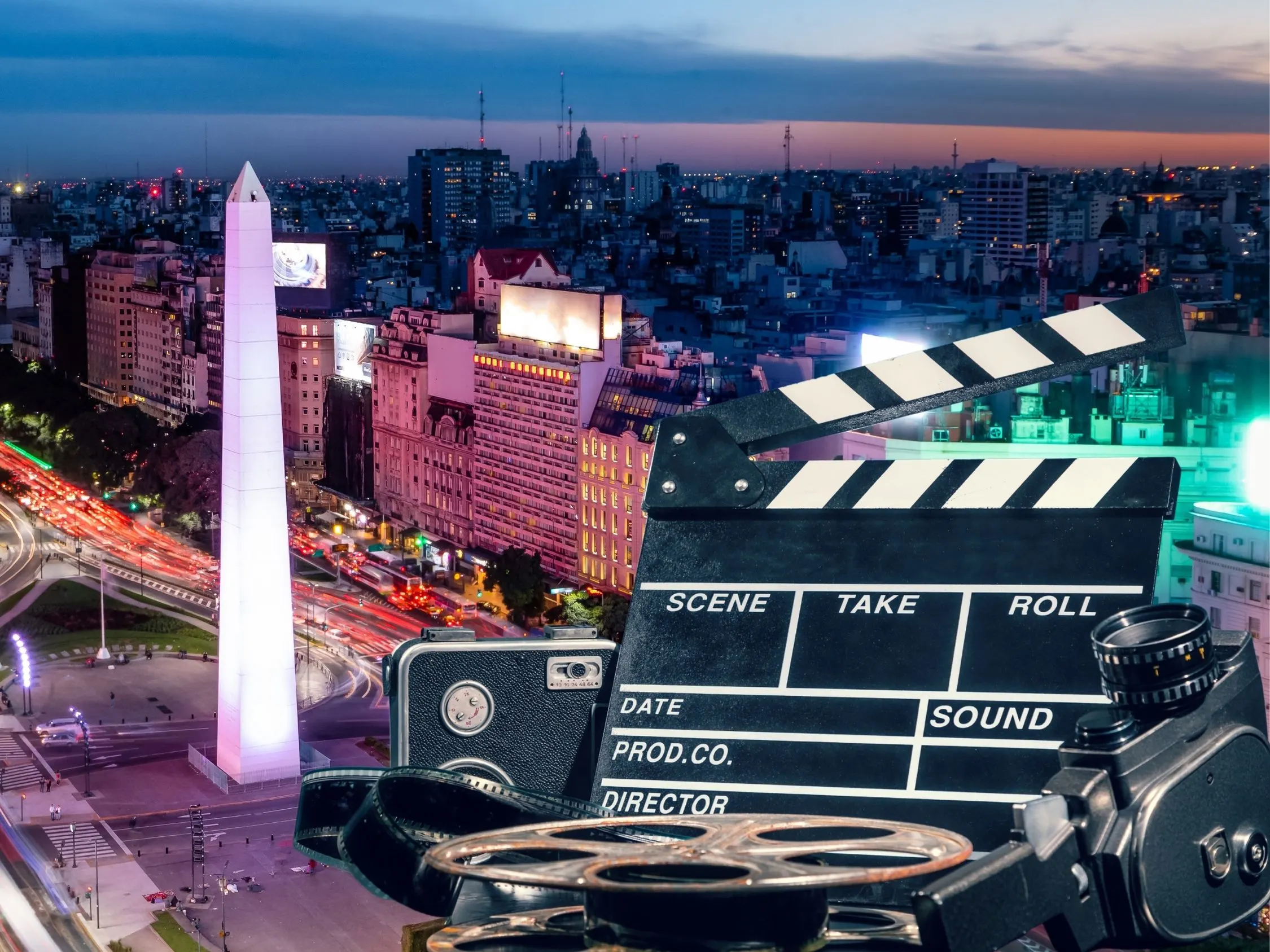Sofia De Vera combines a heartfelt passion for cinema with over 15 years of critiquing for esteemed film publications, wielding academic credentials from the University of Southern California and New York University, to serve as your personal guide through the enchanting worlds of film and television. Her full guest bio can be found here.
Buenos Aires provides the perfect setting for many beguiling films with its remarkable architecture, cobblestone streets, and nostalgic cafés.
Not to mention its vibrant street life, dynamic cultural legacy, and residents with a flair for the dramatic. All of these elements have interested storytellers for years and result in a wonderful complex and rich array of movies set in Buenos Aires. However, you would expect nothing less for such a rich and complex city.
We love this because one of the reasons why we watch movies is that they are a perfect way to travel to different places while staying at home – and to decide if a destination evokes that sense of wanderlust in us before ever investing in a ticket there.
This is what inspired us to visit Boston, Australia, and Scotland, among many other places. Then there are those rare other times you can visit locations and feel like you are back inside the movie (thus the popularity of visiting Middle Earth / New Zealand or James Bond’s Skyfall).

When it comes to Buenos Aires, these films will have you wanting to visit the cities stunning street art displays, dreaming of all the best spots to eat, drink and sleep in Buenos Aires, or counting the days until you can explore the best things to see in Buenos Aires for yourself.
In the following paragraphs, we dive into some of the Argentinan capital’s best cinematic pieces and why they deserve to be watched, as well as the locations featured and the reasons to visit them. From auteur pieces to Hollywood hits, we share with you a list of titles to get to know this magical city – and if that is not enough, we also have a companion piece about movies set in Argentina.
Wondering where to watch? It depends on where you live in the world and which streaming services you have. We link to the streaming service we watch on in each case - be it Netflix, Amazon Prime, Apple TV+, or elsewhere.
You can get one month free of Amazon Prime (or a 6-month trial for students) of Amazon Prime and also get immediate access to FREE Two Day shipping, Amazon Video, and Music. While you won't be charged for your free trial, you'll be upgraded to a paid membership plan automatically at the end of the trial period - though if you have already binged all these, you could just cancel before the trial ends.
Apple TV+ also has a one-week trial, and Hulu has a one-month trial (which can be bundled with Disney!). Another option might be using a VPN to access Netflix titles locked to other regions. Netflix is now available in more than 190 countries worldwide and each country has a different library and availability. US Netflix is (understandably) one of the best.
While we wish everything could just be in one place - for now, it seems these are the best streaming platforms to watch on.



Page Contents
- “Assassination Tango” (2002) directed by Robert Duvall
- “Roma” (2004) directed by Adolfo Aristarain
- “Apartment Zero” (1988) directed by Martin Donovan
- “There be Dragons” (2011) directed by Roland Joffé
- “Tetro” (2009) directed by Francis Ford Coppola
- “The Two Popes” (2019) directed by Fernando Meirelles
- “South” (1988) directed by Pino Solanas
- “Highlander II: The Quickening” (1991) directed by Russell Mulcahy
- “The Way of the Gaucho” (1952) directed by Jacques Tourneur
- “Evita” (1996) directed by Alan Parker
“Assassination Tango” (2002) directed by Robert Duvall
This personal project of the American actor honors his passion for tango in an action thriller. The film tells the story of an assassin for hire who begins to learn the traditional dance from Argentine actress Luciana Pedraza, his real-life wife. During his stay in a cheap hotel, Robert Duvall’s character discovers the idiosyncrasy of Buenos Aires through its streets, people and bars.
Duvall’s film is a postcard of Buenos Aires, showing beautiful images of the popular neighborhood of La Boca and the dance halls in the Villa Urquiza district, where the actor learned to dance tango. Félix Monti’s excellent photography manages to portray the actor’s passion for Argentine culture and introduces the viewer to the festive city of Buenos Aires.
“Roma” (2004) directed by Adolfo Aristarain
This Argentine-Spanish dramatic film tells the story of a disillusioned writer, who, after years without writing, sets out to tell his biography but ends up telling the story of his mother, Roma. The story has parallels with the director’s own life, an Argentine writer exiled in Spain. The film, shot in both Madrid and Argentina, is written from the depths of Aristarain’s heart.
The scenes of the writer’s youthful memories take place in Buenos Aires, where he lived from the 1960s to the 1970s. From his childhood to the mistakes of inexperience, the memory of friends, loyalty, the influence of cinema and jazz, the taste of first love, and the intimate relationship with his parents, were captured in the recordings of the Villa de Pueyrredón neighborhood.
“Apartment Zero” (1988) directed by Martin Donovan
This psychological thriller is set in Buenos Aires in the 1980s and focuses on the paranoia caused by a serial killer on the loose in the city. Even today, it is still renowned as one of the best movies set in Buenos Aires.
The British-produced film follows the story of Adrian LeDuc, a reclusive sociopath who is forced to rent a room due to the crisis at his movie theater. But he begins to suspect that his quiet-looking tenant is the killer. From this premise, he begins a psychological game with the viewer that questions whether it is all just the protagonist’s obsessive imagination or whether the tenant is really a sadistic and perverse person.
The European-influenced architecture of the city of Buenos Aires is a perfect setting to portray the character’s film obsession. The revival house where Adrian lives is also decorated with photos of immortal actors such as Montgomery Clift and other American stars.
“There be Dragons” (2011) directed by Roland Joffé
It is a British historical drama set in the midst of the Spanish Civil War. The plot revolves around a young London journalist who investigates his father’s childhood relationship with Josemaría Escrivá de Balaguer, the founder of Opus Dei.
The film began shooting in Buenos Aires and then moved to Spain to finish it. However, much of the film takes place in Luján, a town on the outskirts of Buenos Aires. The film was set in the Plaza de la Avenida, the museum complex, and the famous Basilica, where thousands of believers come after an annual pilgrimage of about 60 kilometers on foot.
Other localities in Buenos Aires that can be appreciated are Tornquist, Villa Epecuén, Sierra de la Ventana, and Coronel Suarez, demonstrating the wide deployment in the Argentine province.
“Tetro” (2009) directed by Francis Ford Coppola
This famous drama and suspense film portrays a particular family. The story revolves around a character, the son of Italian immigrants, who travels to Buenos Aires to find his older brother, a poet known as Tetro, who disappeared ten years ago.
When he finally finds him, he is very disappointed because the brilliant artist is no longer the idol of his childhood; he has become distant and disillusioned and wants nothing to do with his family. But eventually, a terrible secret is uncovered through a triangle that is created between the two of them and Tetro’s lover.
The unforgettable drama was filmed mostly in Buenos Aires. The story of Tetro takes place in a mysterious black and white atmosphere of the iconic neighborhood of La Boca and San Telmo. In addition to the typical landscapes, the film portrays other specific (and negative) situations that also characterize the Argentine capital, such as insecurity and street demonstrations.
“The Two Popes” (2019) directed by Fernando Meirelles
The dramatic film tries to solve from fiction one of the greatest mysteries that have marked the history of the Vatican in the last 600 years: the resignation of Pope Benedict XVI in 2013, and the unexpected rise of Argentine Cardinal Jorge Mario Bergoglio to the Throne of St. Peter. Based on the book “The Pope,” the film revolves around a fictional conversation between the Bishop of Rome and the man who would later become Pope Francis, the first Latin American pope.
The film was shot both in Rome and in Buenos Aires, more specifically in Villa 31 or Barrio 31, one of the poorest areas of the city. The scenery in the province of Córdoba was also used. Both locations were used for the scenes of Jorge Bergoglio’s time before becoming Pope, in which we are shown his political militancy, his commitment to the poorest, and his passion for soccer.
“South” (1988) directed by Pino Solanas
This Argentine-French sci-fi film is set in Buenos Aires during the 80s. The plot reconstructs the last stretch of the military dictatorship and the return of democracy through the experiences of Floreal, a worker who is arrested after entering the union organization. The epic plot will feature the participation of national cultural stalwarts.
From a theatrical and surrealistic staging, a dreamlike and poetic atmosphere, and very vivid photography, the director shows the viewer the standards of Argentine culture. He also portrays harsh scenes of the militants and the executions of leaders and detainees.
But in Solanas’ film, life triumphs over death, love over resentment, freedom over oppression, and desire over fear.
“Highlander II: The Quickening” (1991) directed by Russell Mulcahy
The French-British sci-fi/action film, starring Christopher Lambert, Virginia Madsen, and Sean Connery, is the first sequel to the cult hit Highlander.
It was filmed in different locations in Buenos Aires, such as Puerto Madero, the Abasto market, the Palacio de


